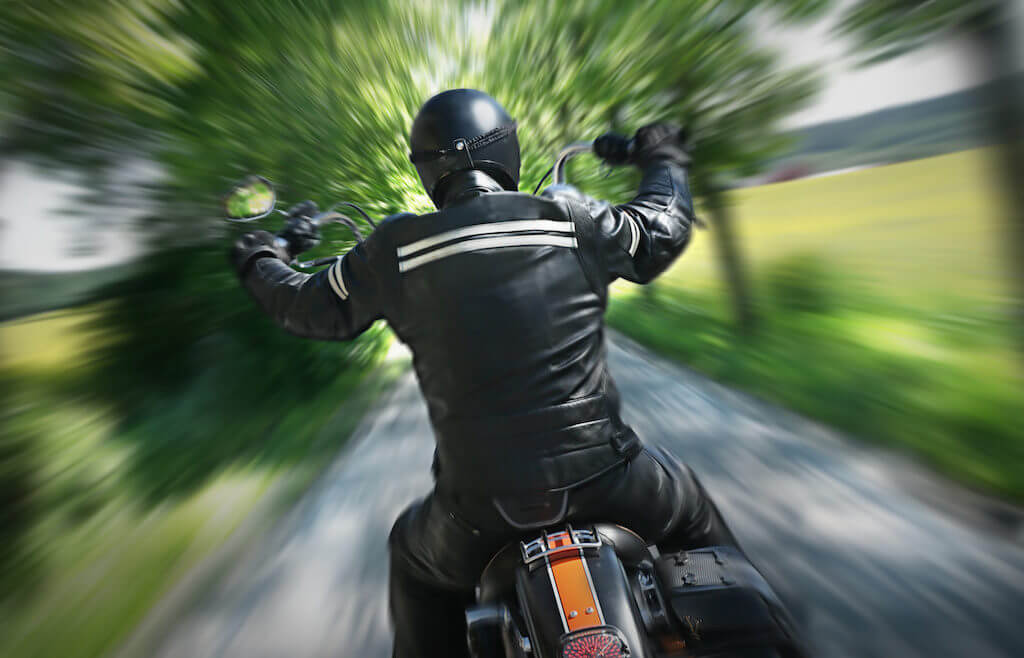Riding a motorcycle is a great way to save on gas while having fun. If you have ever ridden a motorcycle before, you are well aware of the fact that bikes are more dangerous than cars. Did you know that motorcyclists were 30 times more likely to die in a crash compared to individuals who ride in cars? The Insurance Institute for Highway Safety conducted a study that showed how much more dangerous bikes are. This study also found that half of these deaths occurred when a single vehicle crashes.
Riding is even more dangerous for older individuals. Motorcycles are becoming more popular among individuals over the age of 60. However, riding is more dangerous because of slower reflexes, brittle bones, poor eyesight and other factors. When involved in a crash, individuals over the age of 60 are three times more likely to end up in the hospital.
It is true that many motorcyclists never get into a crash. You can lower your risks by preparing yourself for this possibility and by following a few safety tips. According to the IIHS, 48% of fatalities recorded in 2010 were linked to speeding and 42% of fatalities were linked to alcohol consumption. You can greatly reduce your risks by respecting speed limitations and by avoiding alcohol when you ride.
It is also important to choose a bike you are comfortable with. If you are new to riding motorcycles or haven’t been on one in years, you will find that there are some very powerful bikes available. Even small-displacement engines are a lot more performing than they used to be.
Look for a motorcycle adapted to your size. Your feet should be flat on the ground when you are seated. If you have to tiptoe, you need a smaller bike. You should be able to easily reach the handlebars and the different controls. You should be able to easily get on and off the stand. If the bike feels too heavy, look for a lighter model. If you are new to riding bikes or just want something you can commute with, a bike with a 250 or 300cc engine is a good choice. The 500 to 700cc range is more adapted for highway riding. Take a look at our report on motorcycle reliability and satisfaction before choosing a bike.
You can make your bike safer with antilock brakes. These brakes are compatible with many different models and could save your life. A report compiled by the IIHS shows that riders with ABS brakes are 37% less likely to get into a fatal crash. Antilock brakes are more efficient and make your bike safer regardless of the kind of bike you have or of your riding habits.
Your brakes might lock if you have to stop in a panic. You will end up losing your steering control and could crash your motorcycle. Skidding and crashing is very dangerous and will likely result in injuries. You can panic stop with ABS brakes while retaining steering control. This will really make a difference if you have to stop on a slippery road.
Most high-end motorcycles come with ABS brakes. Adding antilock brakes to your bike should only cost a few hundreds. Besides, you should be able to qualify for an insurance discount once you upgrade your motorcycle. These brakes are definitely worth it!
Think about signing up for a class so you can get some practice and learn about safe riding. The Motorcycle Safety Foundation offers riding courses in many states but there are other options available. These classes will teach you how to be safe while riding and you can choose to take a more advanced class if you have been riding for a while. You will learn about evasive emergency manoeuvres that could save your life in a dangerous situation. Some classes are free while some cost up to $350. Some classes will qualify you for a discount on your insurance policy, and taking a safety class means you might be able to skip the road test or the written test to obtain your license in some states. Some manufacturers and dealerships also offer a credit towards a safety class when you purchase a new bike. Check the MSF website to find out more about the classes offered and to find a location in your area. There are over 2,700 locations so you should easily find one in your area.
Even though it is legal to ride without a helmet, doing so considerably increases your risks of sustaining serious injuries. Riding without a helmet makes you 40% more likely to sustain a fatal head injury if you are involved in a crash. It also makes you three times more likely to sustain brain injuries.
The states of Texas and Arkansas saw a respective increase of 31% and 21% in motorcycle fatalities after repealing the helmet law. Orly Acitzur is a neurologist and a medical adviser for Consumer Reports. He explains that repealing helmet laws is not in the best interest of motorcyclists. Helmets can protect the skull and the brain from trauma or at least mitigate injuries, which is why not wearing one is an unsafe practice.
Choose a full-face helmet approved by the Department of Transportation. These helmets will have a DOT certification sticker. You can easily find a comfortable and lightweight helmet that will protect you. Riding with a helmet will also reduce noise and wind fatigue. Avoid riding with an old helmet since they can deteriorate over the years. Ideally, you should replace your helmet once every five years or more often if you are involved in a crash. The Snell Memorial Foundation has conducted some tests and set some safety standards for helmets. This foundation recommends that you replace your helmet at least once every five years due to ageing, exposure to chemicals and hair oil and because new helmet designs and stronger materials will be available.
Invest in the right gear for riding. Wearing jeans, a T shirt and some open shoes increases your risks. Look for gear that will protect you from road rash, debris, bugs and wind chill. A leather or a reinforced jacket is a must-have. You should also invest in some gloves, footwear that will protect your ankles and always wear full pants. You can find jackets with rugged padding and lightweight materials to protect you while providing you with the ventilation you need in the summer. You should also wear goggles or rely on your helmet visor to protect your eyes. Eyeglasses or your bike’s windscreen won’t be enough. Look for brightly-colored gear to be more visible. Some crashes are the results of a car driver not being able to see a motorcycle.
Adopt defensive driving attitude. The University of South Florida’s Center for Urban Transportation Research studied motorcycle crashes and found that car drivers were responsible in 60% of cases. You need to be on the lookout for distracted drivers when you ride. A lot of drivers are making phone calls or even texting when they drive. Look for cars that might switch lanes without any warning or for cars pulling in front of oncoming traffic. Avoid tailgating and make sure you always have enough space to safely stop. Being too close to the car in front of you means you might not be able to stop on time or might not see an object on the road.
Avoid riding your bike if the weather is bad. Driving on a slippery road increases your risks of getting into a crash. Rain reduces your visibility and makes it hard to stop quickly. Cornering can also be an issue since your tires won’t have the same grip. Be very careful if you have to ride in bad weather. Rain causes oil residues to rise to the surface of the road, which is why conditions are always slippery when the rain first starts. If you have to ride in windy conditions, anticipate the potential push from the wind. You will be safer if you ride on the side of the lane since the wind won’t push you into the other lane.
Road hazards like wet leaves, pebbles or sand are more dangerous for a motorcycle because there is less contact with the road. Your bike might slide if you enter in contact with one of these road hazards. Look for bumps, potholes and other damages. If you can’t avoid a road hazard, your best option is to slow down as much as you can. Reduce steering input as much as possible to avoid losing control. If you have to go over railroad tracks or a similar obstacle, adopt a right angle to avoid skidding.
Always check your bike before going on a ride. You should check that your lights, turn signals and horn are working properly. Inspect the brakes, shaft, belt and chain as well. Look for signs of wear on the tire and check the pressure when needed. Motorcycle mechanics say they often see bikes with worn-out brakes and with tires that are not properly inflated. These things make your bike unsafe. Handling your bike is more difficult if the tires are not properly inflated and you might not be able to steer your bike to avoid road hazards.





